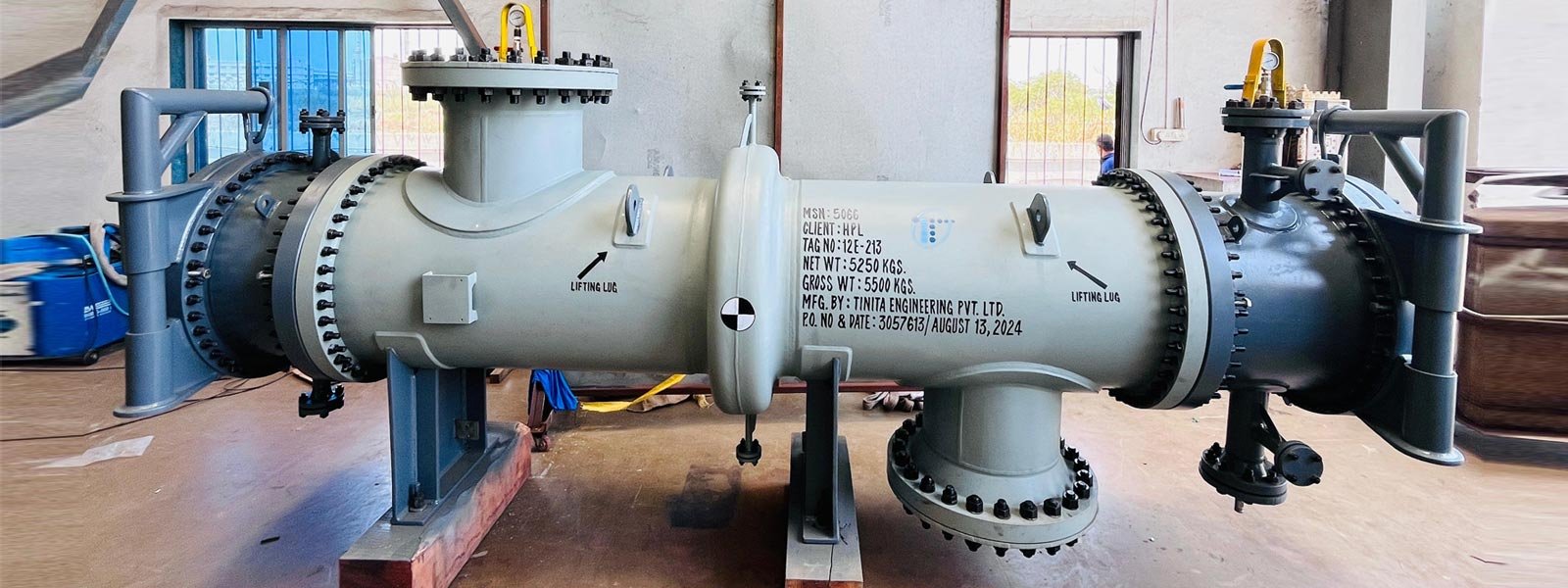The Shell & Tube Heat Exchanger is one of the most widely used heat exchangers in industries such as oil & gas, petrochemicals, power generation, and food processing. While the concept seems straightforward—transferring heat between two fluids—designing one is a complex engineering task. Proper design ensures efficiency, reliability, and long service life, while poor design can lead to fouling, high pressure drops, or even costly system failures.
1. Heat Transfer Requirements
The first step in designing a shell and tube heat exchanger is defining the heat duty—the amount of heat that needs to be transferred. Engineers must calculate:
-
Fluid inlet and outlet temperatures
-
Flow rates of both fluids
-
Required heat load (Q = m × Cp × ΔT)
Selecting the right heat transfer area and tube configuration ensures optimal thermal performance.
2. Flow Arrangement
Shell & tube exchangers can be designed for different flow patterns:
-
Counterflow – Provides maximum heat transfer efficiency.
-
Parallel flow – Easier to design but less efficient.
-
Crossflow – Common for compact designs.
The chosen arrangement impacts efficiency, pressure drop, and fouling tendencies.
3. Tube Bundle Design
The tube bundle is the heart of the exchanger, and its design is crucial:
-
Tube Diameter & Length – Impacts heat transfer area and pressure drop.
-
Tube Pitch & Layout – Triangular pitch increases heat transfer, square pitch reduces fouling.
-
Tube Thickness – Must handle internal pressure and corrosion resistance.
-
Tube Material – Stainless steel, copper, titanium, or alloys depending on fluid properties.
4. Baffle Design
Baffles guide shell-side fluid flow, increasing turbulence and improving heat transfer. Key considerations include:
-
Baffle Spacing – Closer spacing enhances heat transfer but increases pressure drop.
-
Baffle Cut – Determines flow direction and cleaning accessibility.
-
Baffle Orientation – Single segmental, double segmental, or disk & doughnut types.
Incorrect baffle design can cause dead zones, fouling, or vibration damage.
5. Pressure Drop Considerations
While turbulence improves heat transfer, it also increases pressure drop. Engineers must balance:
-
Pumping power requirements
-
Acceptable pressure drop levels for both shell and tube sides
-
Energy consumption vs performance trade-offs
6. Fouling and Maintenance
Fouling is one of the biggest challenges in shell & tube exchangers. To minimize it:
-
Use fouling factors in thermal design.
-
Select tube layouts that reduce deposits.
-
Provide easy access for cleaning (removable tube bundles).
-
Choose materials resistant to scaling and corrosion.
7. Material Selection
The choice of materials depends on operating temperature, pressure, and fluid corrosiveness:
-
Stainless Steel (304/316, Duplex) – Excellent corrosion resistance.
-
Copper Alloys – High thermal conductivity but limited corrosion resistance.
-
Titanium – Ideal for seawater and aggressive chemicals.
-
Nickel Alloys (Inconel, Hastelloy, Monel) – Suitable for extreme conditions.
8. Industry Standards and Codes
To ensure safety and reliability, engineers must follow international standards such as:
-
ASME Section VIII, Division 1 – For pressure vessel design.
-
TEMA (Tubular Exchanger Manufacturers Association) Standards – For design and classification.
-
API Standards – For exchangers used in refineries.
Conclusion
Designing a Shell & Tube Heat Exchanger requires a balance between thermal performance, pressure drop, material selection, and long-term maintenance. By considering these key factors, engineers can achieve optimal efficiency and extend the equipment’s service life.
Tinita Engineering Private Limited specializes in designing and manufacturing high-quality shell & tube heat exchangers that meet global standards, ensuring performance, durability, and safety across industries.
